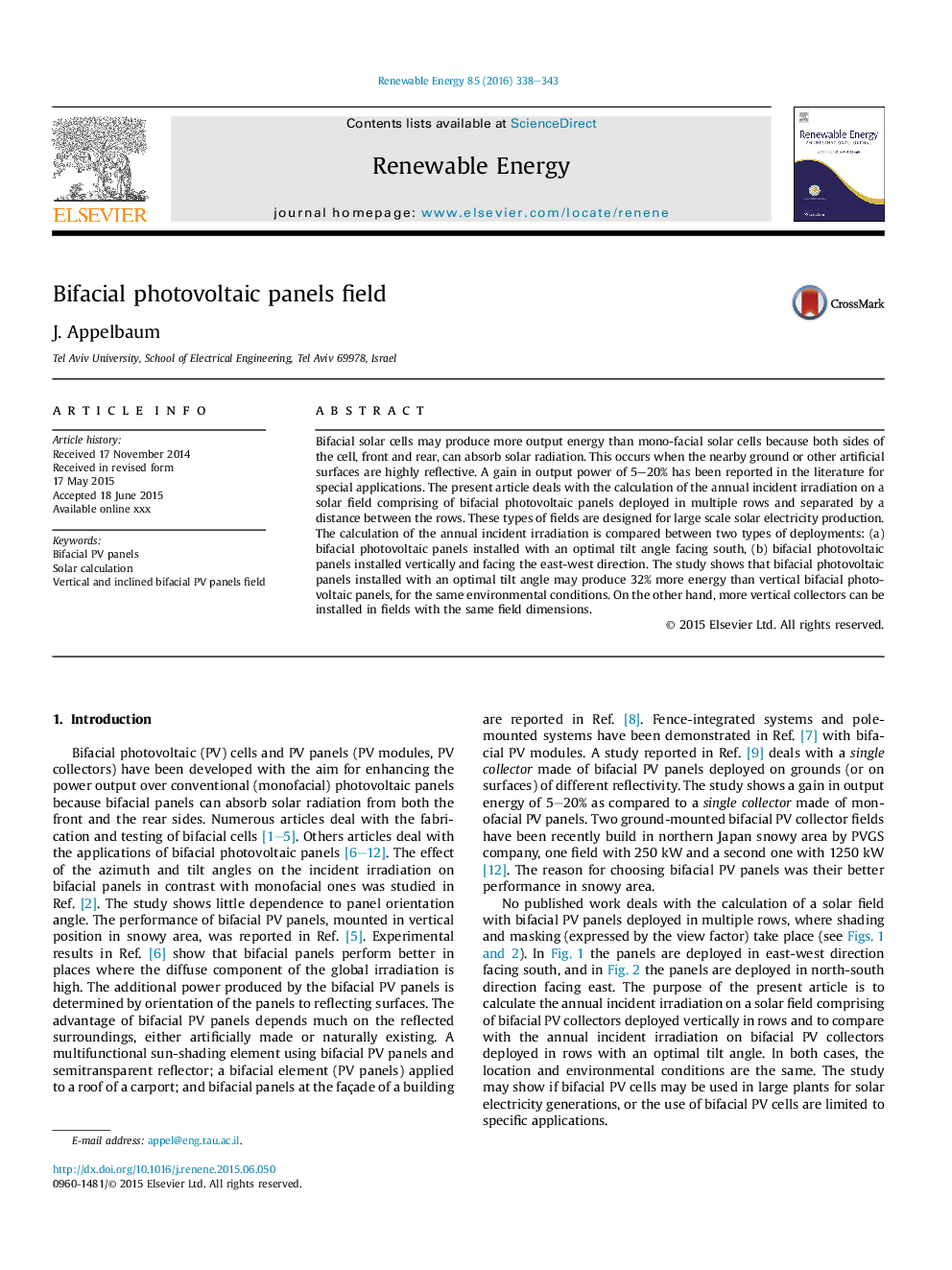| Article ID | Journal | Published Year | Pages | File Type |
|---|---|---|---|---|
| 6766545 | Renewable Energy | 2016 | 6 Pages |
Abstract
Bifacial solar cells may produce more output energy than mono-facial solar cells because both sides of the cell, front and rear, can absorb solar radiation. This occurs when the nearby ground or other artificial surfaces are highly reflective. A gain in output power of 5-20% has been reported in the literature for special applications. The present article deals with the calculation of the annual incident irradiation on a solar field comprising of bifacial photovoltaic panels deployed in multiple rows and separated by a distance between the rows. These types of fields are designed for large scale solar electricity production. The calculation of the annual incident irradiation is compared between two types of deployments: (a) bifacial photovoltaic panels installed with an optimal tilt angle facing south, (b) bifacial photovoltaic panels installed vertically and facing the east-west direction. The study shows that bifacial photovoltaic panels installed with an optimal tilt angle may produce 32% more energy than vertical bifacial photovoltaic panels, for the same environmental conditions. On the other hand, more vertical collectors can be installed in fields with the same field dimensions.
Related Topics
Physical Sciences and Engineering
Energy
Renewable Energy, Sustainability and the Environment
Authors
J. Appelbaum,
